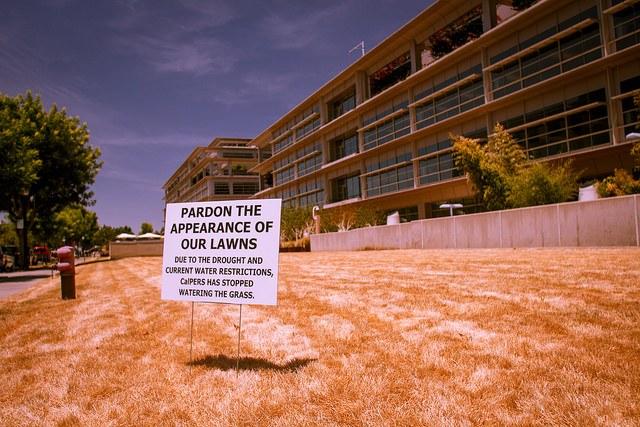
Critics insist that the Obama administration’s effort to scale clean energy is wasteful and misguided, but it can be argued that such focus in part led to the increased adoption and decreased cost of solar power. Now, the White House is jumpstarting another moonshot for water innovation in the hope that the private sector can find new ways to conserve and reuse this precious resource.
Announced earlier this week by Interior Secretary Sally Jewel, the new White House report, entitled Water Resource Challenges and Opportunities for Water Technology Innovation, offers two broad goals. First, the administration wants to increase water stewardship through the accelerated deployment of water reuse and efficiency technologies. In addition, White House officials say they want more investment in research and development that could help scale new water technologies.
This moonshot-for-water initiative in a large part is related to the increased stress on groundwater supplies across the United States. From Fresno County, California, the richest agricultural region in the United States, to north Texas and western Kansas, where ranching drives the local economy, aquifers have become depleted. The U.S. Geological Survey paints a depressing picture about the nation’s groundwater reserves: From 1900 to 2008, the amount of water within all of the aquifers in the U.S. decreased by twice the volume of Lake Erie (115.2 cubic miles). A recent report led by USA Today and the Desert Sun estimated that groundwater reserves have declined as much as 64 percent over the past 20 years. No matter how the data on groundwater is sliced and diced, the outlook is a miserable one.
As in the case of how many environmentalists (and their foes in industry) were unsatisfied with the administration’s 'all-of-the-above' energy policy, critics will find plenty to dislike about this proposed water agenda. Few will argue with the need for improved materials and manufacturing for water pipes as part of the solution, as anywhere from 14 to 18 percent of treated water is lost due to leaks. Other solutions will foment plenty of debate: for example, the Administration is calling for increased water reuse, to which consumers often blanch because of the “ick” factor. More efficient desalination is also under consideration, though many object because of the amount of energy required for removing salt out of seawater. White House officials are touting all of these ideas as they prepare for a water summit that coincides with World Water Day on March 22, 2016.
According to the White House, this attention focused on water is hardly something new. Rather than presenting a lame-duck initiative, the Obama Administration claims that it has been proactive on water challenges. For example, government agencies have been instructed to be more transparent about water data, in order to help local decision-makers develop long term strategies. President Obama also announced the National Drought Resilience Partnership, which aims to help both the private and public sectors plan at a time of increased water scarcity. Meanwhile, the USDA launched a program that encourages farmers to implement practices and technologies that help improve soil and air quality.
Whether any of this makes a difference for water stewardship during the last remaining months of Obama’s presidency remains to be seen. Foreign policy and immigration have consumed politics and voters’ attention as another election season comes underway, so a rethink of conservation and water technology could very well occur under the radar. So far states have often been trying to solve these problems on their own, but with dubious results. The reality is that water scarcity is a challenge that is nationwide, so a coordinated effort should be welcomed--rather the than hundreds or thousands of competing water policies started by states and counties that together, so far, have done little to solve this massive problem.
Image credit: Kevin Cortopassi (Flickr)

Leon Kaye has written for 3p since 2010 and become executive editor in 2018. His previous work includes writing for the Guardian as well as other online and print publications. In addition, he's worked in sales executive roles within technology and financial research companies, as well as for a public relations firm, for which he consulted with one of the globe’s leading sustainability initiatives. Currently living in Central California, he’s traveled to 70-plus countries and has lived and worked in South Korea, the United Arab Emirates and Uruguay.
Leon’s an alum of Fresno State, the University of Maryland, Baltimore County and the University of Southern California's Marshall Business School. He enjoys traveling abroad as well as exploring California’s Central Coast and the Sierra Nevadas.














